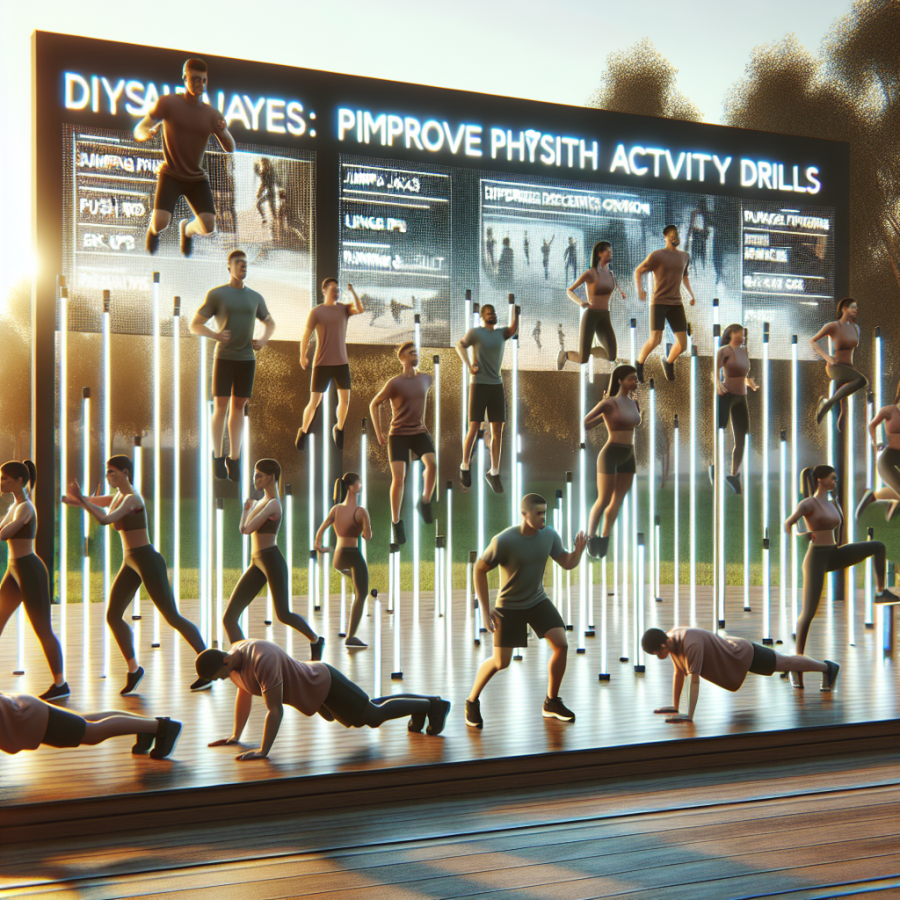Essential Drills for Gaining Maximum Results from Your Workout
It's essential to have appropriate exercise drills for achieving measurable gains from your workouts. If you're looking to maximize your workouts, you need to incorporate some vital drills into your exercise regimen.
One of the first steps towards maximizing your workout is to understand the importance of a warm-up routine. A good warm-up increases the blood flow to the muscles, raises your body temperature, and prepares your neuromuscular system for physical activity. Some effective warm-up drills can include jumping jacks, high knees, and dynamic stretches.
Strength-training exercises are the next worthy inclusion in your routine. Incorporating compound movements like deadlifts, squats, bench presses, and overhead presses can be hugely beneficial. These exercises just not work multiple muscle groups at once but also increase your strength, burn fat, and boost your metabolism.
Next, consider drills that utilize High-Intensity Interval Training (HIIT). Researchers have linked HIIT exercises with improved cardiovascular health, increased calorie burn, and enhanced fat loss. A standard example of a HIIT drill could be a cycling sprint or a Shred & Tread workout.
Functional training is also essential to consider when designing your workout routines aimed at achieving maximum results. These exercises enable you to perform your day-to-day activities more effectively and efficiently. Functional training drills can include exercises like the goblet squat, single leg deadlift, or standing shoulder presses.
Flexibility and mobility drills often are overlooked, but they are crucial to maximizing the benefits from your workouts. Inflexibility and poor mobility can affect the quality of your workouts and lead to potential injuries. Yoga poses, dynamic stretching, and foam rolling are excellent methods for improving these areas.
Resistance band drills are another fantastic way to optimize the efficiency of your workouts, especially for those with limited access to gym equipment. They can be beneficial for both upper body and lower body workouts.
Lastly, always include a cool-down period in your workouts to gradually decrease your heart rate and bring your body back to its pre-workout state. This phase can also help reduce muscle soreness post-workout. Simple walking or static stretching can do the trick.
By incorporating these drills into your workout routine, you are on your way to ensuring that you get the most out of every workout session. Remember, consistency in these drills and progressively increasing intensity is key to achieving optimal results.
Read also:
Breaking Points: Understanding the Pivotal Moments in Tennis Matches
Implementing Effective Exercise Drills into Your Fitness Regime
When it comes to maximizing your workout strategies, developing an effective exercise drill system is critical. Drills provide a structure that allows for goal alignment, progression tracking, and efficient use of time in workout sessions.
One of the first things you'll want to consider when implementing effective exercise drills into your fitness regime is your individual fitness level and goals. This will determine the intensity, variety, and duration of your drills. For example, if strength and muscle building is your main objective, you may need to lean more towards weightlifting or resistance training drills. Your goals should dictate the type of drills you choose to incorporate.
Creating a workout routine schedule is another important step in effectively implementing exercise drills. This can provide consistency and accountability to your workout regime. A well-thought-out schedule will include a variety of drills targeting different parts of the body and a balanced mix of strength training, cardio, and flexibility activities to achieve full-body fitness.
Progressive overload should also be considered within your exercise regimen. This principle involves gradually increasing the amount of weight or resistance in your workouts to promote muscle growth and strength. Your body gets used to the same routine and demands over time, so increasing the weight or resistance effectively challenges your muscles, leading to faster growth and development.
Functional training drills are another aspect worth considering. These exercises utilize multiple muscle groups simultaneously to replicate everyday actions or sports-specific movements. For instance, doing squats is a functional exercise because it mimics the motion of sitting or standing, which we do several times a day.
Taking advantage of rest periods is a critical, yet often neglected part of any fitness regime. Rest intervals allow your muscles to recover and grow after a workout session. It’s pivotal to implement intervals of rest into your workout plan to avoid over-exercising, which can lead to fatigue, diminished results, and even injuries.
HIIT (High Intensity Interval Training) drills can also be an effective part of your training regime. HIIT involves short bursts of intense exercises followed by short recovery periods. The exercises can immensely improve cardiovascular fitness, promote weight loss, and overall health. Including these drills in your workout plan can increase the efficiency of your training.
Lastly, remember that motivation plays a key role in sticking to workout plans. Find ways to make your exercise drills enjoyable. This could be mixing up your drills, setting small, achievable goals, or working out with a friend.




